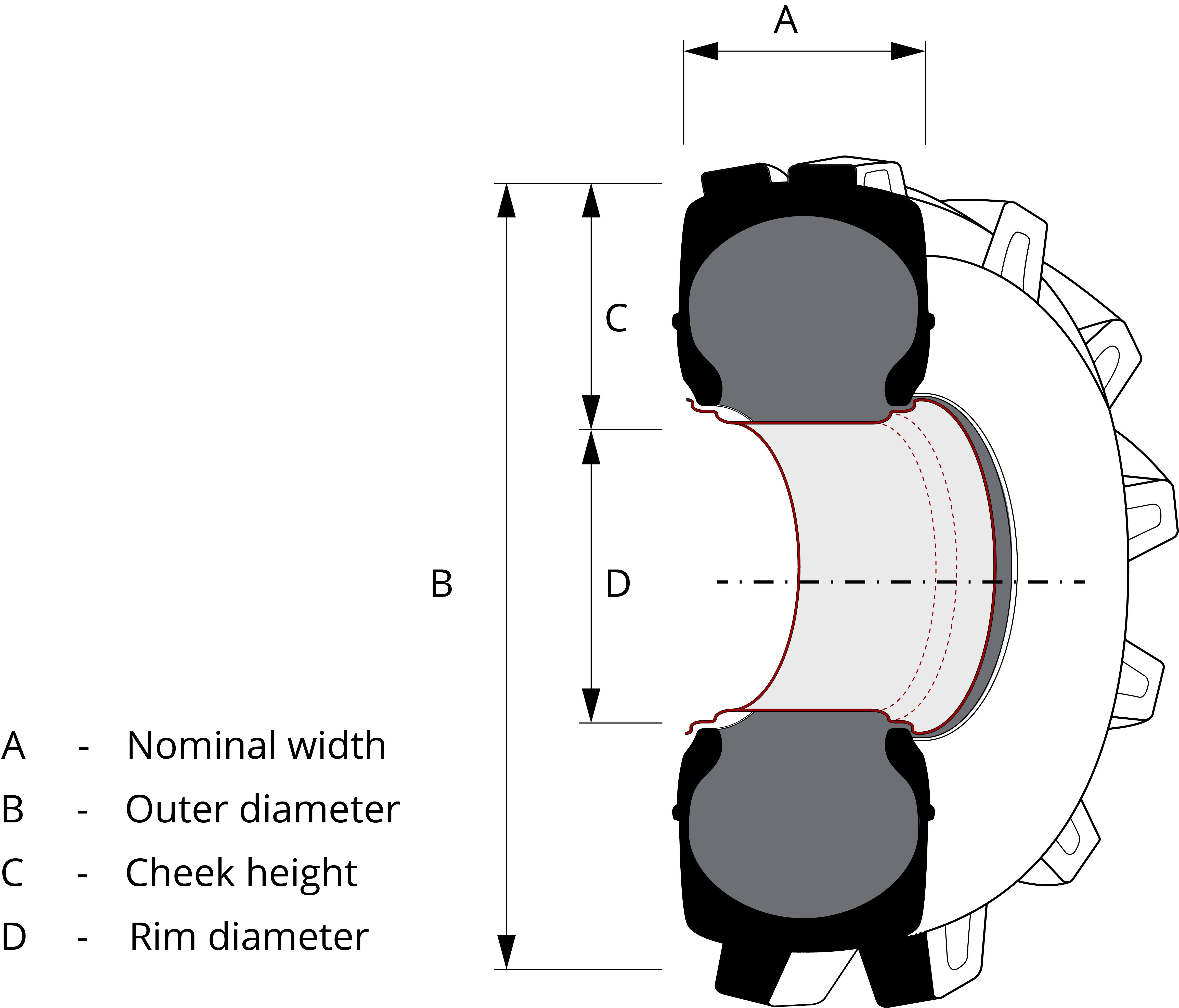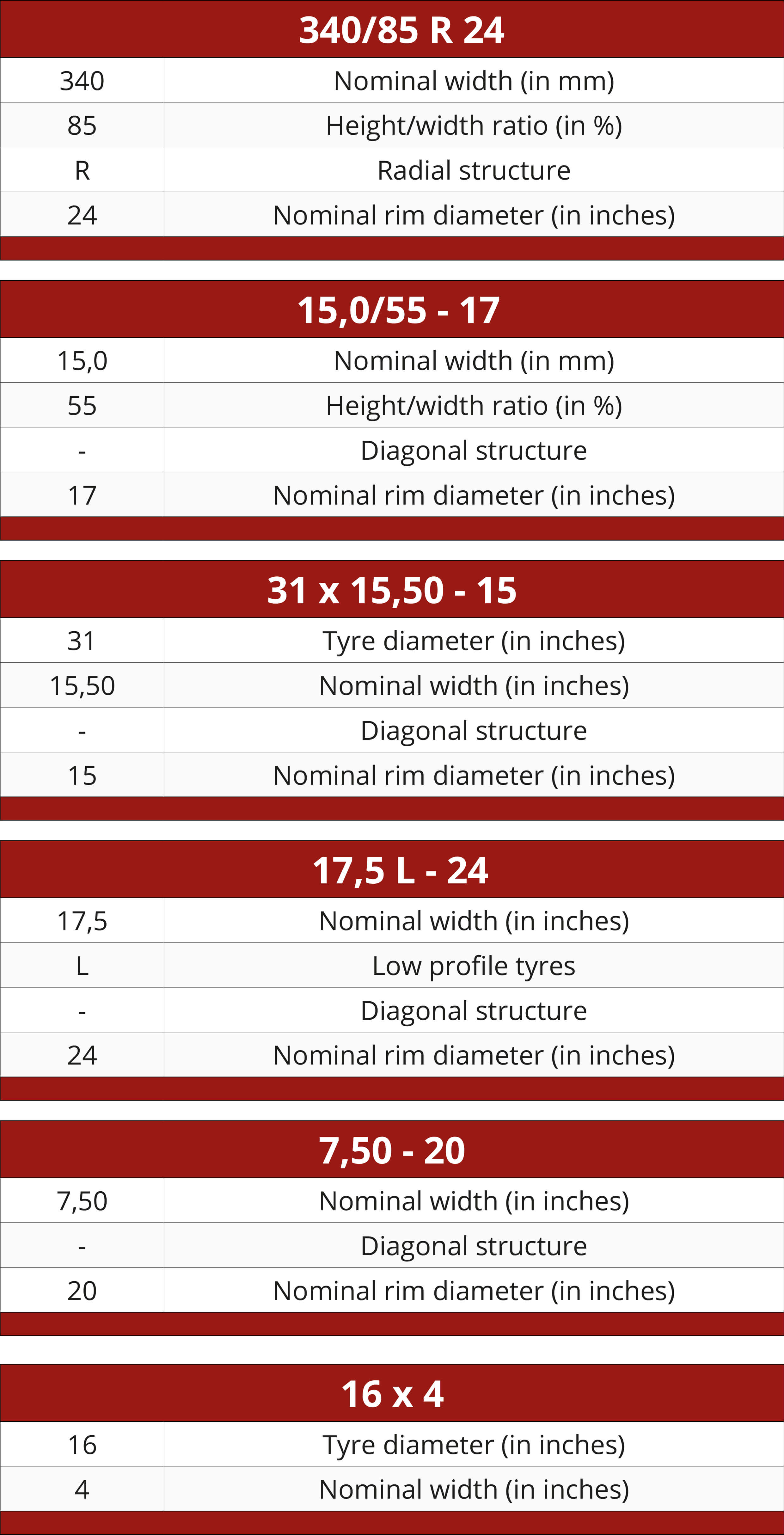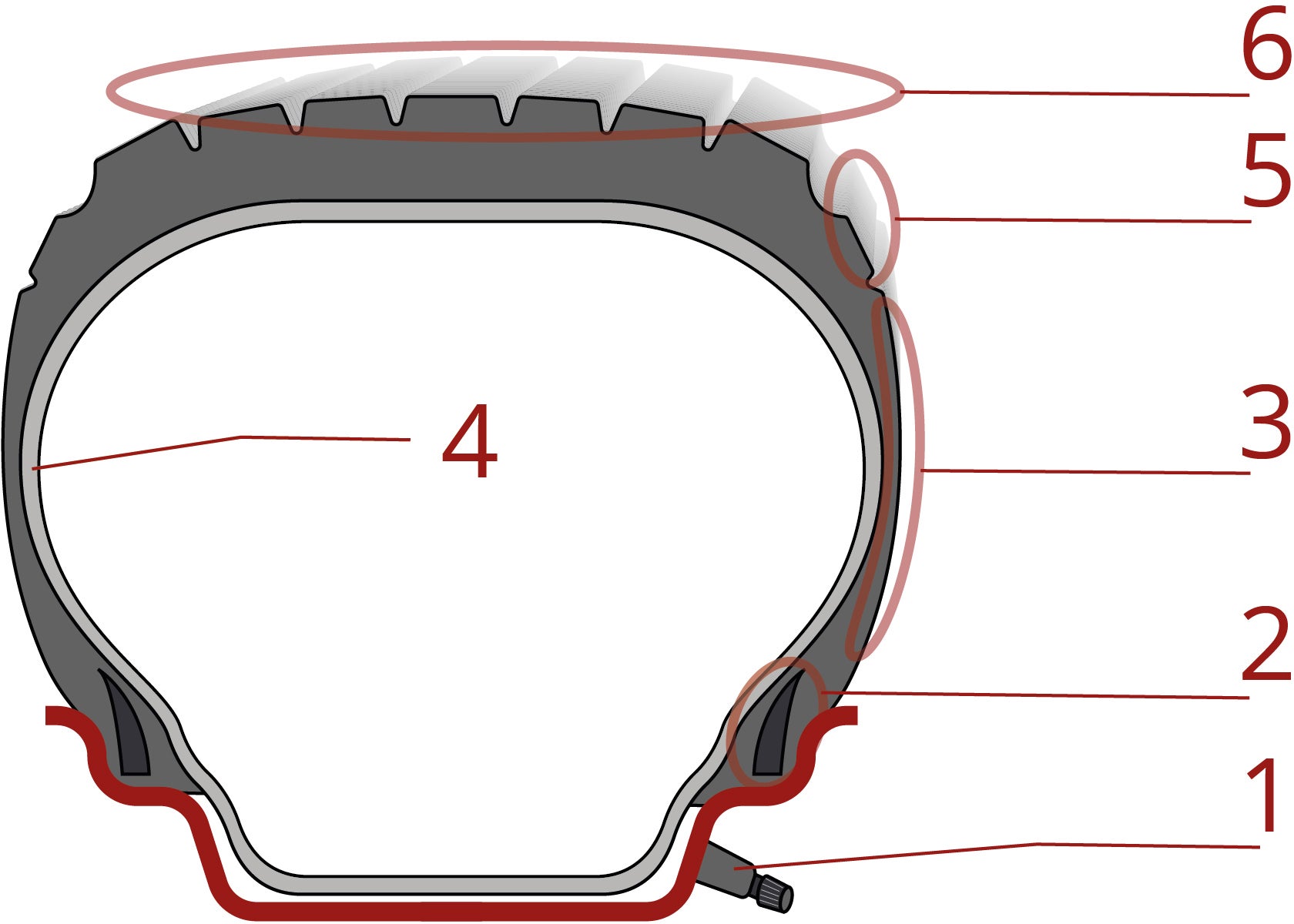Various systems are used to indicate the size of a tyre. This sometimes makes it difficult to order a new inner tube or outer tyre. How do you choose the right tyre and what do the different markings mean? Follow the step-by-step plan below.
Step 1. Recognize the indications
There are various methods circulating to indicate tyre sizes. Whereas in the past imperial measurements were mainly used, a combination of inches and millimetres is more common nowadays. However, the different indications are interchangeable, depending on the application and the tyre brand. Below we briefly explain the most common designations using some examples.
16.9 R34
In this example, '16.9' stands for the width, indicated in inches. The 'R' stands for radial, i.e.: the carcass structure of the tyre is radial (cords run at right angles to the direction of rotation of the tyre). For diagonal tyres (cords run diagonally across each other), there is no indication of 'R'. 34' stands for the diameter of the rim. This size is always indicated in inches.
The tyre height in this indication is normally 85% of the width. In this example: 85% of 16.9 inches = 365mm.
340/85 R24
Millimetres are used for this indication. 340 is the width of the tyre in mm and '85' stands for the height of the tyre (cheek height). In other words: 85% of the width of the tyre. In this example, the cheek height (H in the table) is 290mm (340 x 0.85). The cheek height is always indicated as a percentage of the width.
12 – 16.5
The size of the tyre is expressed in inches. The width of the tyre is 12 inches which corresponds to 305mm. The rim diameter is 16.5 inches. The hyphen indicates that this is a diagonal tyre.
16 x 4
In these dimensions only the diameter and width of the tyre is indicated. In this case the diameter is 16 inch = 400mm and the width 4 inch = 100mm.
31 x 15.5 – 15
This last example is almost the same as the previous one. However, it also shows the diameter of the rim and the hyphen indicates that it is a diagonal tyre. The size of the tyre in this example is 31x25.4 = 790mm diameter. The width is 15.5x25.4 = 395mm and the rim is 15 inches. In the metric size indication this would be a 395/50-15 tyre.
 Explanation of terms
Explanation of terms The most common indications
The most common indicationsStep 2. Desired tyre and tube combination
Choosing the right inner tube is difficult because this choice is not always tied to the size of the outer tyre. An inner tube can often be used for several tyre sizes. It is flexible, so you can inflate it, and it will expand as necessary. Make sure that an inner tube is not too big, as this will cause folds in the inner tube and therefore strange bumps in the tyre combination.
For example, the 650166ST34 tyre 6.50-16 takes a 60016TR15 Inner tube 6.00-16.
The purpose of a valve
In addition to the above two steps that guide you to the right tyre combination, it is also good to know that there are also different valves.
A valve on a tyre is used to inflate the tyre to the correct pressure. There are angled, straight and tubeless valves.
- Angle valves are used when there is little space to inflate the tyre. The angled angle makes it easy to reach the valve.
- Straight valves are the most common. A straight valve is also always slightly angled on the tyre to make it easier to use.
- There are also tubeless valves. These are used with tubeless tyres.
The size of the valve indicates the size of the opening. For example, a TR13 valve has a smaller rim hole diameter than a TR218A valve.
Valves are always sealed with a valve cap. Should you lose these, it is wise to replace them. A valve cap prevents dirt from getting into the valve.
What is the right tyre profile?
Tyres are in direct contact with the ground. The tread is found on the tread and shoulder of a tyre. Profiles are made up of a number of different patterns. The tread determines the area of application. So what is the right tread is not so easy to answer. It depends on the application.
In addition, the roundness of the shoulder is important. It can be rounder or more square. A rounder shoulder ensures less rutting compared to an angled shoulder. For example, the tyres of a lawnmower need a rounder shoulder to prevent rutting. But a tractor that has to go into the field to bring in the harvest needs a hooked shoulder to get grip. The tyre bead should always fit snugly on the rim. Especially with tubeless tyres, this is very important.
 1= valve
2= heel
3= sidewall/cheek
4= inner tube
5= shoulder
6= tread/profile
1= valve
2= heel
3= sidewall/cheek
4= inner tube
5= shoulder
6= tread/profileDo you have any questions?
Would you like to know more about the different types and sizes of tyres? Keep an eye on the Kramp Knowledge Centre, consult a product specialist or find a Kramp dealer near you. We'll be happy to help!
